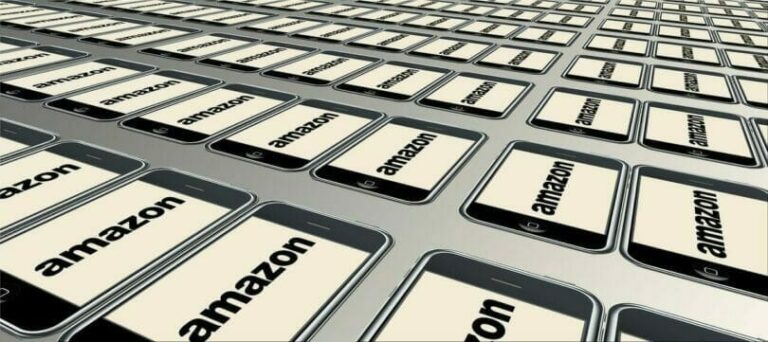From Landfills to Compost: The Benefits of Biodegradable Packaging
Introduction: The Growing Need for Sustainable Packaging
In recent years, there has been a growing awareness of the negative impact that traditional packaging has on the environment. From plastic bottles to Styrofoam containers, these materials contribute to pollution, waste, and climate change. As a result, there is an increasing demand for eco-friendly alternatives that can help mitigate these issues. Biodegradable packaging has emerged as a promising solution, offering a more sustainable option for packaging materials.
What is Biodegradable Packaging and How Does it Work?
Biodegradable packaging refers to materials that can break down naturally and safely in the environment. These materials are designed to decompose through the action of microorganisms, such as bacteria and fungi, into natural elements like water, carbon dioxide, and biomass. The process of biodegradation is influenced by various factors, including temperature, moisture, and the presence of microorganisms.
There are several types of biodegradable materials used in packaging, including bioplastics, paper, and plant-based fibers. Bioplastics are derived from renewable sources, such as corn or sugarcane, and can be composted or recycled. Paper is a widely used biodegradable material that can be easily recycled or composted. Plant-based fibers, such as bamboo or hemp, are also biodegradable and can be used for packaging materials like bags or containers.
The Environmental Impact of Traditional Packaging
Traditional packaging, particularly plastic packaging, has a significant negative impact on the environment. Plastic waste is a major problem, with millions of tons of plastic ending up in landfills and oceans each year. Plastic takes hundreds of years to decompose, and during this process, it releases harmful chemicals into the environment. These chemicals can contaminate soil, water, and air, posing a threat to wildlife and ecosystems.
The carbon footprint of traditional packaging is also a concern. The production of plastic and other non-biodegradable materials requires the extraction of fossil fuels and the release of greenhouse gases. Additionally, the transportation and disposal of these materials contribute to carbon emissions. By choosing biodegradable packaging, we can reduce our reliance on fossil fuels and minimize our carbon footprint.
The Benefits of Biodegradable Packaging for Landfills
One of the key benefits of biodegradable packaging is its impact on landfills. When biodegradable materials are disposed of in landfills, they break down naturally over time. This process helps to reduce the amount of waste in landfills and prevents them from reaching capacity. As biodegradable materials decompose, they release less methane, a potent greenhouse gas, compared to non-biodegradable materials. This reduction in methane emissions contributes to mitigating climate change.
Furthermore, biodegradable packaging has the potential to be composted. Composting is a natural process that turns organic waste into nutrient-rich soil. By composting biodegradable packaging, we can create a valuable resource that can be used to enrich soil and support sustainable agriculture. Composting also helps to divert waste from landfills and reduce the need for chemical fertilizers.
How Biodegradable Packaging Reduces Pollution
Plastic pollution is a global crisis that affects wildlife, ecosystems, and human health. Plastic packaging, in particular, contributes to this problem. When plastic waste ends up in oceans and waterways, it poses a significant threat to marine life. Animals can become entangled in plastic debris or mistake it for food, leading to injury or death. Additionally, plastic breaks down into microplastics, which can be ingested by marine organisms and enter the food chain.
Biodegradable packaging offers a solution to this issue. When biodegradable materials enter the environment, they break down into natural elements without leaving behind harmful residues. This reduces the risk of pollution and minimizes the impact on wildlife and ecosystems. By choosing biodegradable packaging, we can help protect marine life and preserve the health of our oceans.
Furthermore, biodegradable packaging helps to reduce litter and waste in the environment. Non-biodegradable materials, such as plastic bags or bottles, can persist in the environment for years, contributing to visual pollution and posing a hazard to wildlife. Biodegradable materials, on the other hand, break down naturally and do not accumulate as litter. This helps to keep our surroundings clean and reduces the need for waste management and cleanup efforts.
The Role of Biodegradable Packaging in the Circular Economy
The concept of a circular economy aims to minimize waste and maximize the use of resources. In a circular economy, materials are designed to be reused, recycled, or composted, rather than disposed of as waste. Biodegradable packaging plays a crucial role in this model by providing a sustainable alternative to traditional packaging materials.
Biodegradable packaging fits into a circular economy model by being designed to break down naturally and safely. After use, biodegradable materials can be composted or recycled, allowing them to be returned to the earth or used as raw materials for new products. This closed-loop system helps to reduce the demand for virgin resources and minimize waste generation.
The Economic Benefits of Biodegradable Packaging
In addition to the environmental benefits, biodegradable packaging also offers economic advantages. Firstly, biodegradable materials can be cost-effective. While the initial cost of biodegradable packaging may be slightly higher than traditional packaging, the long-term savings can be significant. For example, by reducing waste and pollution, businesses can avoid fines or penalties associated with environmental regulations. Additionally, the potential for composting biodegradable materials can lead to savings in waste management and fertilizer costs.
Furthermore, the sustainable packaging industry has the potential to create jobs and stimulate economic growth. As the demand for biodegradable packaging increases, there will be a need for skilled workers in manufacturing, research and development, and waste management. This can lead to job creation and provide opportunities for economic development in communities.
Moreover, reducing waste and pollution through biodegradable packaging can have economic benefits at a larger scale. By minimizing the environmental impact of packaging materials, businesses can enhance their reputation and attract environmentally conscious consumers. This can lead to increased sales and customer loyalty, ultimately driving economic growth.
Biodegradable Packaging and Consumer Behavior
Consumer behavior plays a crucial role in driving the adoption of biodegradable packaging. It is important for consumers to be educated and aware of the environmental impact of traditional packaging materials. By understanding the benefits of biodegradable packaging, consumers can make informed choices and support sustainable alternatives.
Consumer choices have a direct impact on the environment. By choosing biodegradable packaging, consumers can help reduce waste, pollution, and carbon emissions. Additionally, consumer demand for biodegradable packaging can drive innovation and encourage businesses to invest in sustainable practices. By supporting companies that prioritize sustainability, consumers can contribute to positive change and create a demand for more eco-friendly options.
The Future of Biodegradable Packaging: Innovations and Challenges
The future of biodegradable packaging holds great promise, but it also presents challenges that need to be addressed. One of the key areas of innovation is the development of new materials and technologies. Researchers are exploring alternative sources for biodegradable materials, such as algae or fungi, and investigating ways to improve the performance and durability of biodegradable packaging. Additionally, advancements in recycling technologies can help improve the efficiency and effectiveness of recycling biodegradable materials.
However, scaling up production and distribution of biodegradable packaging remains a challenge. Currently, the production of biodegradable materials is limited compared to traditional packaging materials. This can result in higher costs and limited availability. To overcome this challenge, there is a need for investment in infrastructure and manufacturing capabilities to meet the growing demand for biodegradable packaging.
Furthermore, continued research and development are essential to address any potential environmental or health concerns associated with biodegradable materials. It is important to ensure that biodegradable packaging is safe for consumers and does not have unintended consequences on the environment. Ongoing research can help improve the performance and sustainability of biodegradable materials and ensure their long-term viability.
Conclusion: The Importance of Choosing Biodegradable Packaging
In conclusion, the need for sustainable packaging solutions has never been more urgent. Traditional packaging materials have a significant negative impact on the environment, contributing to pollution, waste, and climate change. Biodegradable packaging offers a more sustainable alternative, with benefits for landfills, pollution reduction, the circular economy, the economy, and consumer behavior.
By choosing biodegradable packaging, we can help reduce waste in landfills, minimize methane emissions, and support composting. Biodegradable materials also help reduce pollution, protect wildlife and ecosystems, and reduce litter and waste in the environment. Furthermore, biodegradable packaging plays a crucial role in the circular economy, promoting resource efficiency and minimizing waste generation.
The economic benefits of biodegradable packaging are significant, with cost savings, job creation, and increased sales potential. Consumer behavior plays a crucial role in driving the adoption of biodegradable packaging, and consumer demand can drive innovation and encourage businesses to prioritize sustainability.
While there are challenges to overcome, the future of biodegradable packaging holds great promise. Continued research and development, as well as investment in production and distribution capabilities, are essential to ensure the long-term viability and sustainability of biodegradable materials.
In conclusion, choosing biodegradable packaging is not only a responsible choice for individuals and businesses, but also a necessary step towards a more sustainable future. By making the switch to biodegradable packaging, we can protect the environment, support the economy, and create a better world for future generations.
Check out this article on the importance of biodegradable packaging in reducing environmental impact. It discusses how businesses can make a positive change by adopting sustainable packaging solutions. By using biodegradable materials, companies can minimize waste and contribute to a greener future. To learn more about the benefits of biodegradable packaging, click here.

